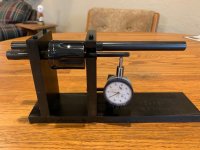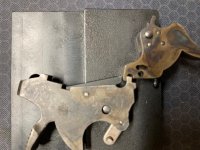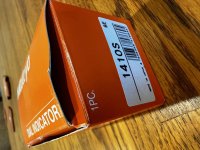Welcome to the rabbit hole! I am having a boatload of fun messing with stuff and figuring out what works and what doesn't.
A few more things that I have found are really handy to have:
- A good notebook so you can keep track of what you do and how well it works
- A set of proper fitting screwdrivers. I have the big Wheeler set, the Brownells "LE" set, and a set of Forster screwdrivers. I prefer using the Forsters...I get better control if the shank is the same size as the tip.
- A good pair of small, non-serrated needle nose pliers. I like the Vampliers brand. These are more for picking things up than for anything else.
- An assortment of sandpaper. Stop by your local auto parts store and grab a paint finishing assortment. 600, 1000, and 2000 grit sheets. You'll also need a piece of glass or lexan that you can use as a backer when you're sanding.
- A dental pick. Good for cleaning out gunk and really handy for reinstalling the hand onto the trigger.
- Containers for small parts. Sierra plastic bullet boxes work well, as do liquid laundry soap cups. I also use an empty .45 AARP plastic ammo tray for things that have to go back in a certain order (think sideplate screws).
- A small benchtop vise for times when you need a third hand. Be sure to get a set of soft jaws for it.
- Feeler gauges. Get these at the auto parts store when you get your sandpaper.
- A set of calipers. The ones you use for reloading will work fine.
- A good trigger pull scale. You need to know....
- Patience and a sense of humor.
- A magnifying glass of at least 10x. Amazon can help you here.
- If you wear bifocal glasses, consider getting a prescription specifically for the distance you'll be working at. There are online resources for cheap glasses. Not having to hunch up like the proverbial monkey with the football in order to have things in focus will save your back.
- A brass hammer. I have a variety of steel ball-peen hammers that almost never get used. The brass hammer gets used almost every time I need to hit something.
- A good assortment of punches and drifts. Harbor Freight chinesium punches are really soft and will not mar steel. They are great for pushing on things but they bend/deform easily and aren't great for actually moving tight fitting pins. Get those first and then spend the money for a really good set of steel punches. You'll use both. Eventually you'll also need roll pin punches and cup tipped punches.
- A rebound spring tool. I have mixed feeling on this one...it's great for removal but not so good for installation. I prefer to use a specially ground screwdriver to do the install.
- A hammer handle for removing sideplates.
- The Power Custom ejector rod straightening jig is nice to have and will be used more often than the sear jig, but you can do a lot without it.
- Did I mention patience?
- Your phone camera. Take pictures of everything
before you take it apart. Trust me on this one...
- This forum. There are some truly amazing people here that will help you when you get stuck. If something doesn't seem to be working just ask and a person who has forgotten more than either of us will ever learn will come along and say "Do this..."
Have fun and be sure to share your projects with us!
Here are the tools that I use the most:
-











